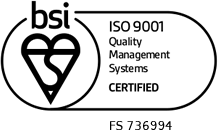Although the Ground Transport sector covers Cars, Trucks, Buses, Trains – the car, or automobile market is by far the largest.
In the present day, two current trends are apparent:
- The shift away from fossil fuel-based internal combustion engines (ICE) and its replacement by (predominantly) electric battery-powered vehicles
- Ultimately, greater use of public transport systems – eg: shared/hired pool cars, buses, trains and trams, as more cost-effective and efficient
Electric vehicles (EVs) are set to replace combustion engine vehicles (CEVs) worldwide by the mid-2030s. Currently, road transport based on combustion engines accounts for approximately 25% of all greenhouse gas emissions worldwide. That figure is unfortunately still growing! Moreover, although EVs are more efficient to run and maintain than CEVs, they are less efficient to produce – in terms of embodied energy emissions, that is, the total amount of energy required to mine and extract raw materials, transport them, process them, and finally manufacture the vehicle itself. Much of this inefficiency comes from the greater scarcity of materials required and greater weight of materials ultimately moved and processed. This disadvantage in embodied energy emissions is just one of the problems that modern materials science must seek to address if we are truly to enjoy the greener future promised.
Another disadvantage of current-generation battery-based EVs is their comparatively short range and long recharging times. One approach to mitigating this is to reduce total weight since for a 10% reduction in vehicle weight, a 7% increase in fuel efficiency and thus range can be gained. Another novel approach is the concept of e-roads harnessing Wireless Power Transfer (WPT) – eg: conductive – using for example graphene loaded concrete, or inductive – using for example ferrite loaded concrete aggregate. This is especially suitable for buses, taxis, lorries, travelling regular routes, or stopping at regular places, and can significantly reduce the size and hence the weight of batteries required. Pilot WPT e-road schemes already exist in Italy, the Netherlands, South Korea, Israel, Germany, and are in the planning stages in Norway, Sweden and the UK. The technology also has applications in the logistic sector and ground support equipment (GSE) – eg: forklifts, etc.
Lightweight EVs are the way ahead. To that end, engineering approaches such as combining lightweight battery components into the cellulose + carbon-fibre based composites used to construct the car body shell is being actively pursued by several manufacturers.
Two further problems currently beset mass adoption of EVs:
- The need to source and mine large quantities of rare metals and rare earth materials, often confined to a few geological and geographic pinch points, (note 1)
- The need to recycle a much as possible of such material bound up in an ultimately huge number of worn out and obsolete EVs of the future.
The first problem fuels much research into alternative battery/energy storage and motor designs, using alternative materials and approaches (eg: magnet-less motors, different anode materials). The second problem is directing attention towards removing glues and potting compounds from battery designs and into novel solvents and processes, for dismantling batteries and reclaiming valuable materials. A lot of progress still needs to be made, however, in designing EV components to be easily recyclable.
Another important development is that of intelligent & self-driving vehicles – not only cars, but also trains, buses, trams, and road haulage vehicles. As ever, this gives rise to increasing demand for faster, smaller, cheaper and more efficient communications and computing technologies, and the materials that enable them ( see section on electronics, computing and communications ).
At the present time, however, we find ourselves in a transition period, and for some years at least will see an (albeit) reducing volume of conventional ICE vehicles produced alongside higher-tech EV replacements.
Regardless of the type of motive power and the fuel used, materials properties of greatest interest to the sector include:
- specific strength and specific stiffness
- yield strength and tensile strength
- thermal expansion coefficient and the maximum service temperature
- weight and strength to weight ratio
- cost
Of continuing interest are low-cost materials suitable for panel forming, that is also durable to smaller dings and bumps, and resistant to corrosion and wear.
All land vehicles require not just chassis and running gear, of course, but also a vast array of other components such as active suspension systems, brake discs, electrical systems, housings and potential 3D-printed manufactured parts.
Regarding material weight, many EV manufacturers, including Tesla and BMW, have ditched carbon fibre for better performing light alloys, which at the moment is mainly based on aluminium. Magnesium is also catching the eye of many auto manufacturers, thanks to advancements in coating technologies which are making it suitable in high-wear, high-corrosion risk and high-temperature applications. CFRPs ability to be 3D printed means its use is still increasing,
For lighter metals, such as aluminium, magnesium and titanium alloys, a variety of different surface coating can be integrated using the plasma electrolytic oxidation (PEO) process – a more versatile alternative to anodising. PEO coating (aka micro-arc oxidation (MAO)) produces multiple ceramic layers on the surface of light metals and their alloys; a porous outer layer makes it possible to impregnate different reagents in order to customise the performance characteristics – achieving, for example, two to four times the hardness of hard anodising or steel, increased wear resistance, corrosion resistance and thermal and chemical stability, & greatly extending component life.
Fibre Reinforced Plastic (FRP) body panels in car design date back as far as 1941, but it was not until 1981, that the first car with a CFRP main load-bearing structure was introduced with the McLaren MP4/1 Formula 1 car. FRP is commonly now used for hang-on parts for most production cars.
The current trend is to introduce lightweight materials in more integrated designs, in low-cost products, and in transitioning from low production volumes to mass production.
The predominant present-day practice, however, is still the greatest use of a mixture of steel, aluminium, some magnesium, plus FRP parts according to requirements for strength (esp. for safety-critical components/structures) and to keep costs down.
Steel still possesses a number of advantages where strength, low cost and ease of forming and welding are required. In view of its advantages, steel itself has been the subject of significant and advanced development, with different steels (and alloys) for different uses. For example Highly-plastic IF-steel, ВН-steel that is actually strengthened by the process of paint drying on it, Dual Phase (DP) steels, Transformation Induced Plasticity (TRIP) steels, Complex Phase (CP) steels, Martensitic (Mart) steels, AHSS (advanced high-strength steels) and UHSS (ultra-high-strength steels), & High-strength austenitic steels. Also, a new generation of High-strength and super-plastic TRIPLEX-steels, and Nano-structured hot-rolled steel (NANOHITEN). These are but some of the specialised steels in common use within the industry and are in addition to the many better-known types of carbon steels and alloy steels also in widespread use.
Aluminium (and its alloys) has an advantage over steel when it comes to weight, but is difficult to weld, not as strong as steel, and more conductive of vibration and noise, as well as being more expensive. In an effort to increase hardness, durability, fatigue strength, corrosion resistance, plasticity, thermal conductivity, and other properties, the development of new aluminium alloys continues apace. Alloys containing titanium and vanadium, steel, ultrafine particles of oxides, carbides, borides and other nonmetallic inclusions, are common. Other modifications involve the addition of surfactants such as Lithium, Sodium, Potassium, Rubidium, Caesium, Sulfur and phosphorus. A great variety of other additives, treatments and processes also pertain, that are in addition to the already hundreds of different aluminium alloys in use more generally.
A wide variety of Aluminum matrix composites (AMCs) are increasingly used by the automotive industry. In general, AMCs provide greater strength, improved stiffness, reduced density (weight), improved high-temperature properties, controlled thermal expansion coefficient, thermal/heat management, enhanced and tailored electrical performance, improved abrasion and wear resistance, control of mass (especially in reciprocating applications) and improved damping capabilities. AMCs fall into five basic types: Particulate Reinforced Aluminum Matrix Composites (PAMCs), Whisker or short fibre-reinforced AMCs (SFAMCs), Continuous fibre-reinforced aluminium matrix composites (CFAMCs), and lastly Hybrid AMCs (HAMCs) that entail multiple inclusion types. Each has its own advantages, and challenges and all represent active areas of ongoing research and development currently.
Like advanced steel, Aluminium, its alloys, and composites are still very much an active area of research and development in materials science.
Polymers and Reinforced Polymer Composites are widely used in the automotive industry as in many others. Its principal advantages are weight, ease of forming, moulding, and even 3d-printing, and many can even be recycled. But the major disadvantage is currently one of cost – preventing wider use within more structural components. There are mainly around 5 types of plastic in most widespread use – polyurethanes, polyvinylchlorides, polypropylenes, ABS plastics, fibreglass plastics, and a further 4 types in less common/more specialised uses – polyethylenes, polyamides, polyacrylates, and polycarbonates. Typically such plastics and plastic composites are used for some body panels, dashboards, hanging components, fittings, upholstery, seat belts, steering wheels and much more.
With the advent of electric vehicles (EVs) and their need for reduced weight, a variety of plastic composites are being deployed much more widely for structural components and body shells. Examples are Carbon Fiber Reinforced Plastic (CFRP), fibreglass reinforced plastic, and various mixtures of carbon fibres plus other fibres such as kevlar, aluminium and fibreglass reinforcement. Even graphite reinforced with fibreglass and miligraphite fibres reinforced with plastic (fibreglass) is to be found. Typically, such materials can provide weight savings of 50% over steel and 30% over aluminium and can be easily combined with either.
Multifunctional composites are also a very active area of development, especially because of electric and hybrid vehicle requirements. By way of example, consortia of automobile manufacturers are engaged in developing body panels made of polymer carbon fibre and resin, that also incorporate rechargeable battery technology, thus reducing weight and cost considerably. Other research and development continue into airless tires, smart headlights, hydrophobic windows, to mention just a few of the more novel ideas.
Nanotechnology is increasingly viewed by the automobile industry as being of great benefit. A prominent example of in the use of nanoparticles in polymer coatings, to provide enhanced protection from weathering, scratching and UV damage, and even to provide self-healing of micro-cracks. Applications include car body parts, headlights, etc.



